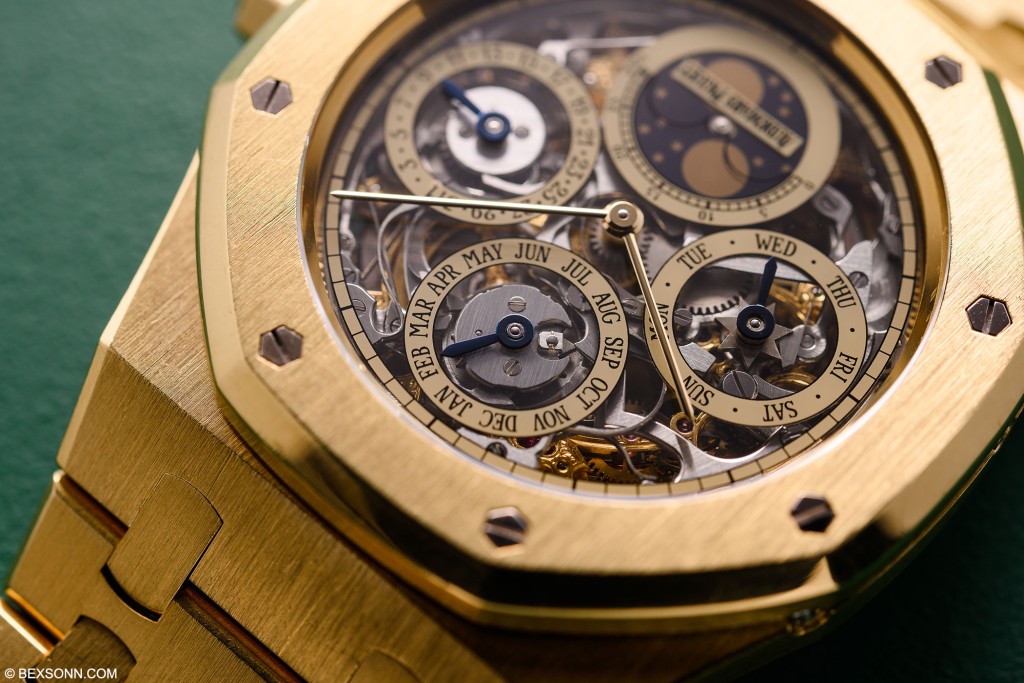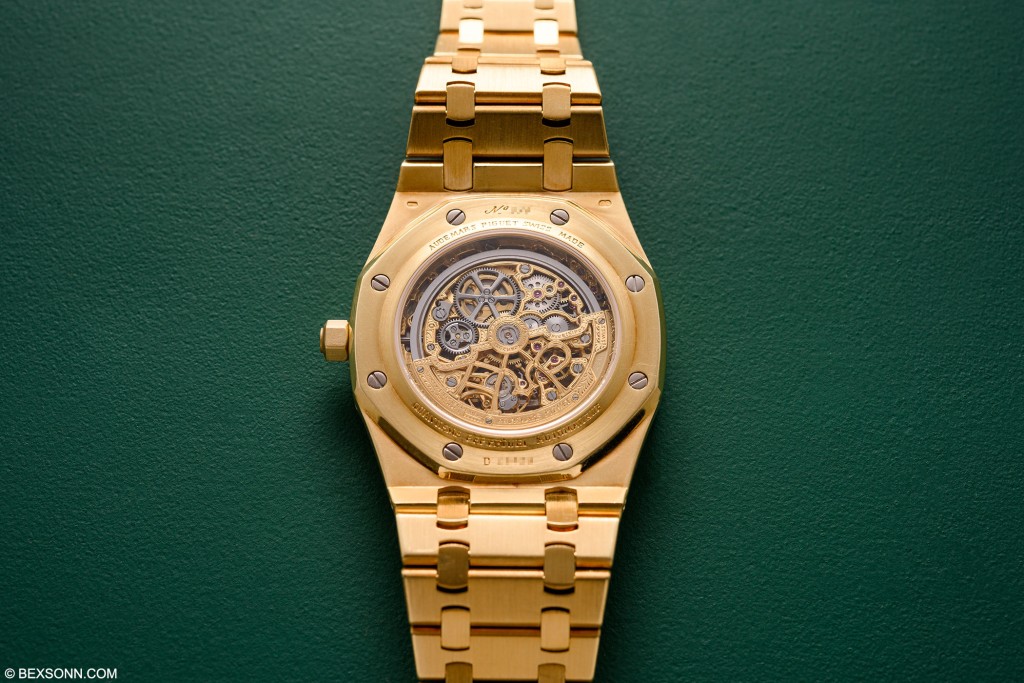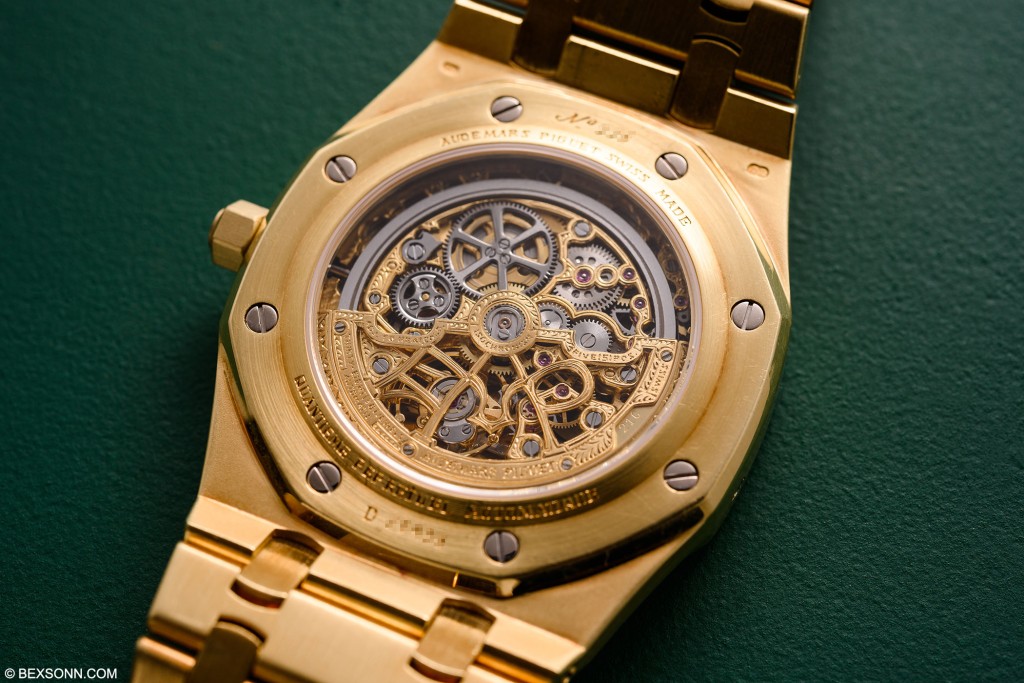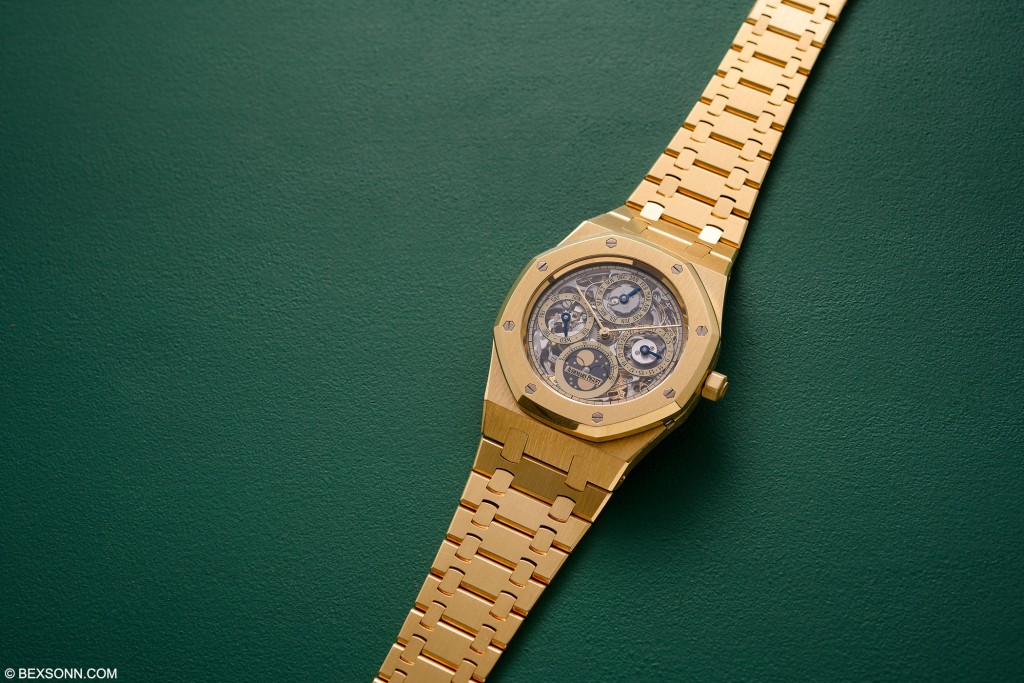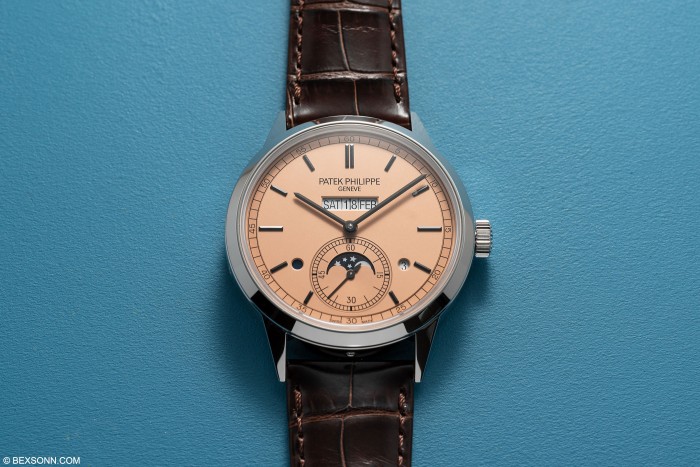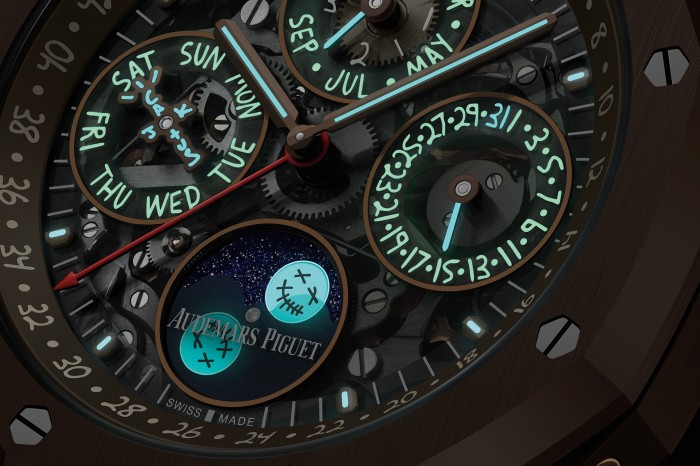For most of our existence on Earth the Sun and Moon have been our official timekeeper. As early as the mid-16th century watches had begun to feature sophisticated complications including day, date, and phases of the moon. However, the precision of these watches weren’t quite exact, it wasn’t until a century before the industrial revolution in the 1700s where accuracy and reliability in mechanical horology harmonised.
In 1955 Audemars Piguet produced the very first series of perpetual calendar wristwatch to feature a leap year complication, the reference 5516 (pictured above). The premier timepieces are generally, in recent history, referred to as ‘Simple Calendar’s or ‘Triple Calendar’s (day, date and month). The true display of horological innovation can be noted in the New Audemars Piguet Perpetual Calendar, which possesses what one may call primitive artificial intelligence. The timepiece knows that February has 28 days for three consecutive years prior to the leap year when the 29th day is added.
It has been said that the “Perpetual Calendar timepieces are part of the DNA of Audemars Piguet”. Audemars Piguet created one of the greatest horological advancements of the late 1970s when the manufacturer released the world’s thinnest self-winding perpetual calendar wristwatch, measuring an extraordinary 3.95mm in thickness. In accordance with the shift in case size, the new Royal Oak Perpetual Calendar measures 41mm but is still rather thin. The magnified case size came as a blessing in disguise allowing one to greatly appreciate the overall aesthetics and legibility gave birth to a ‘Grand Tapisserie’ dial design.
AP are famed for their avant-garde design, the Royal Oak burst onto the scene in 1972 as the world’s first luxury stainless steel sports watch. While created by Audemars Piguet to tackle the growing financial stress they were undergoing due to the Quartz Crisis, the Royal Oak quickly took over AP’s other offerings and became their most popular. To bridge the gap between their high complication watchmaking and the Royal Oak’s utilitarian functionality, the collection began to grow with complicated variants. Perhaps one of the most iconic is the watch I have here, the Royal Oak Perpetual Calendar Openworked ref. 25636BA.
Designed much like every other Royal Oak that came before it, the Royal Oak Perpetual Calendar ref. 25636BA features a 39mm octagonal case with a plethora of polished and brushed surfaces, sharp bevels, and a beautifully intricate integrated bracelet. Constructed from 18k-carat yellow gold, the ref. 25636BA depicts the ultra-luxurious aesthetic that AP has become so closely linked with.
If there are two things that Audemars Piguet are known for championing it must be the perpetual calendar and delicate art of open working – and this timepiece has both traits in abundance.
Beyond its construction, this ref. 25636BA features a stunning sapphire dial that reveals the open-worked perpetual calendar movement that lies beneath; AP’s incredible cal. 2120/2800. Showcasing AP’s traditional craft of open working, the Royal Oak Perpetual Calendar ref. 25636BA was one of the most intricate and detailed watches from the manufacture and featured not only a complicated movement in a sports watch (which was highly unusual at the time), but also exquisite finishing and engravings throughout. That said, the calibre 2120/2800 has a rather unusual back story.
The calibre 2120/2800 didn’t come about as the result of a management meeting, nor was it part of a short-term strategic plan. It was the brainchild of three watchmakers and technicians who were committed to their craft and concerned about the Quartz crisis. Michel “le Mic” Rochat, one of the three watchmakers who ended up working at AP for 34-years, initiated a covert project creating mock-ups in cardboard in collusion with Jean-Daniel Golay – founder of the technical department. Blueprints were drawn up aided by Vallée de Joux horological school. The third accomplice, Wilfred Berney, founder of the aftersales service, contributed his watchmaking knowledge with the suggestion the calendar module should be matched with the exceptional calibre 2120 movement that was introduced in 1967 and powered the first RO models in 1972.
In 1977, they presented the prototype to the Georges Golay, the result was perhaps far better than they initially imagined. The ultra-thin under dial work the perpetual calendar combined with world’s thinnest self-hiding movement achieved a total thickness of just 3.95mm.
The 1970s was a rather strange time for the watch industry and while wristwatches with date apertures was rather widespread, perpetual calendar wristwatches were extremely scarce as only AP and Patek had been producing examples in series. The demand for such a complication was a big unknown, it was a high-risk gamble, but it was clearly one that paid off. Over the years the calibre 2120/2800 underwent technical evolutions, over a 15-year period. The 2120/2800 calibre saw seven major modifications undertaken on the perpetual calendar complication and at the same time, case construction was modified to increase water resistance.
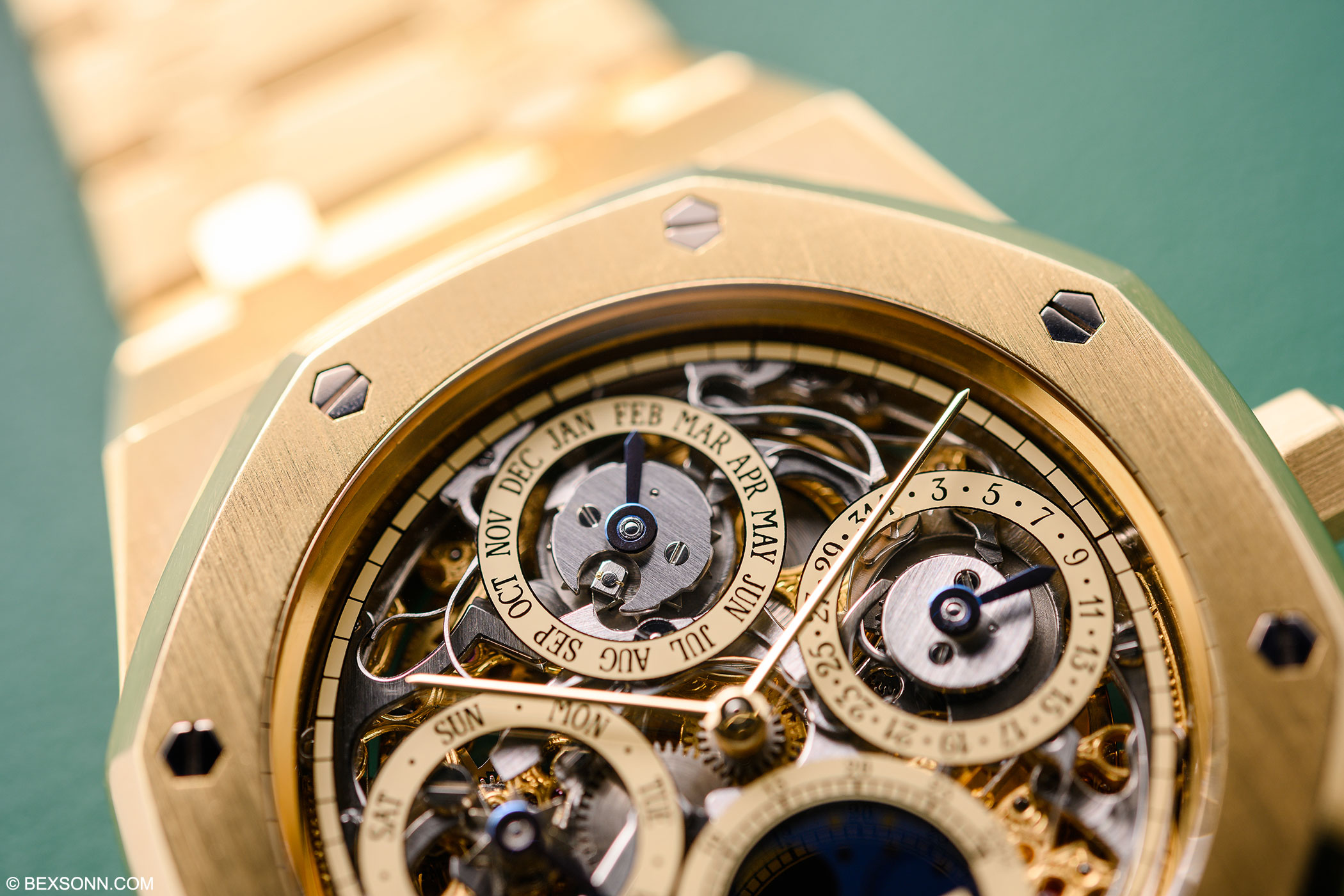
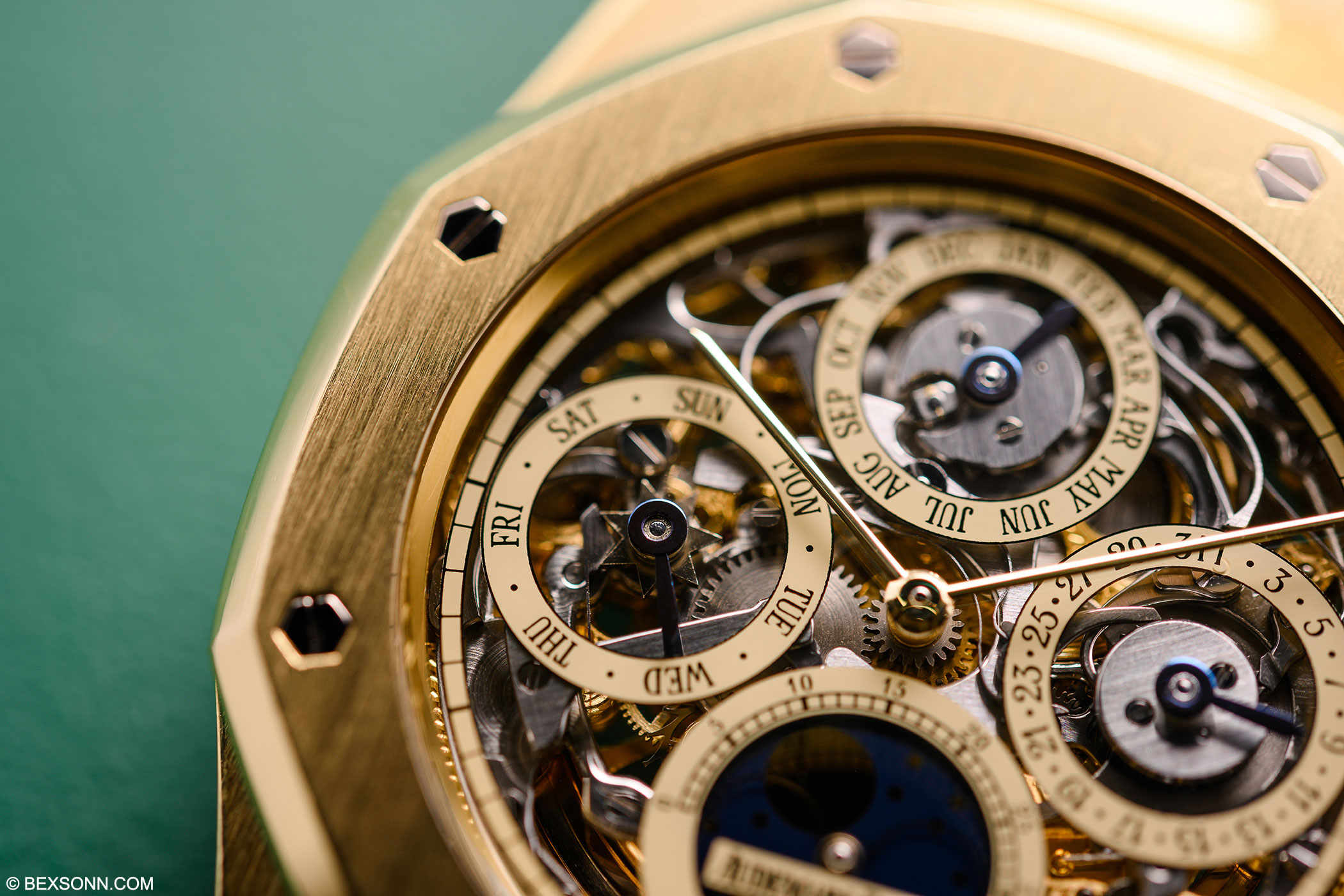
While today Audemars Piguet is well known for their open working, it was them that first championed it with models such as this 25636BA. This example lies within the first generation of Royal Oak Perpetual Calendars, with the notable absence of a leap year indicator. Even though this perhaps makes the watch less useful, watch collectors prize these references because of their historical importance and rarity.
Limited to just 126 pieces spread over its production period from 1986 to 1996, the Royal Oak Perpetual Calendar ref. 25636BA is a gorgeous watch that is, at its core, a piece of art. With its cal. 2120/2800 displaying some of the most spectacular finishing possible from both its dial side and from behind its exhibition caseback with the inclusion of its ornate 18-carat gold winding rotor, the Royal Oak Perpetual Calendar ref. 25636BA remains one of AP’s most beautiful pieces to date.



